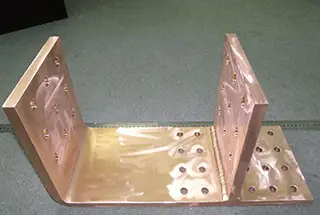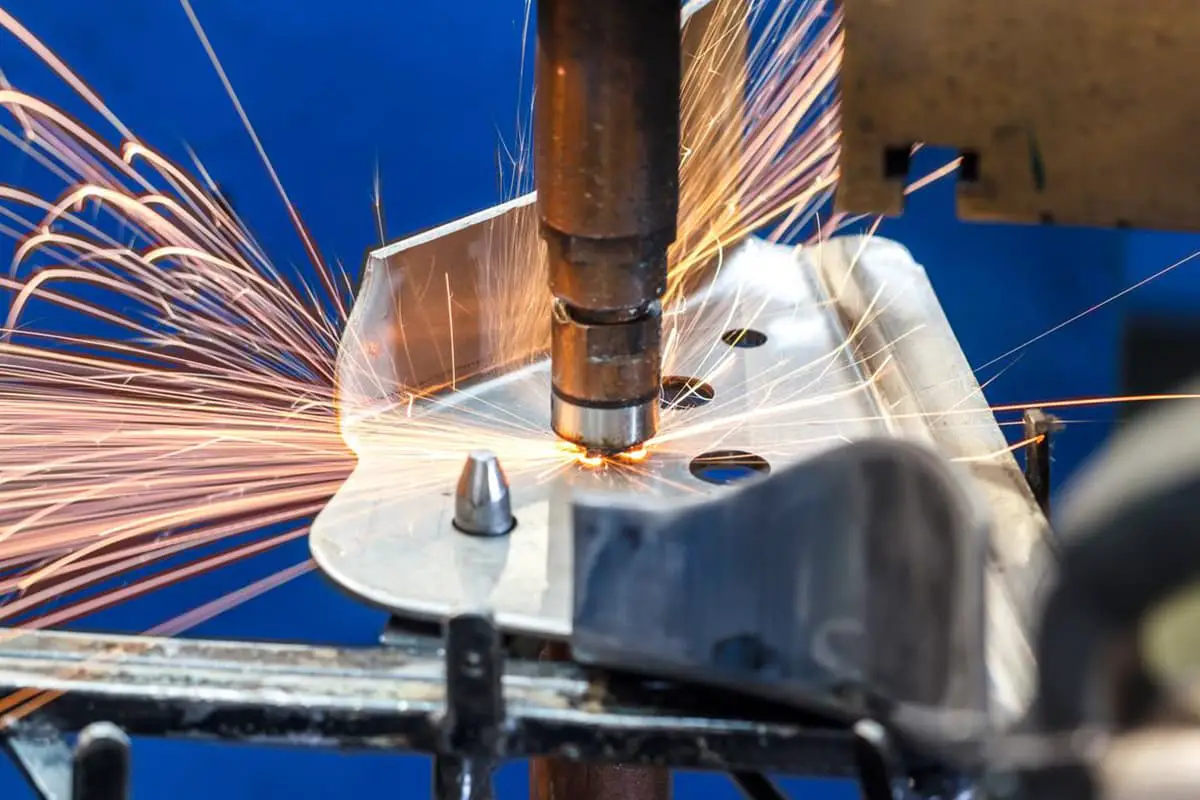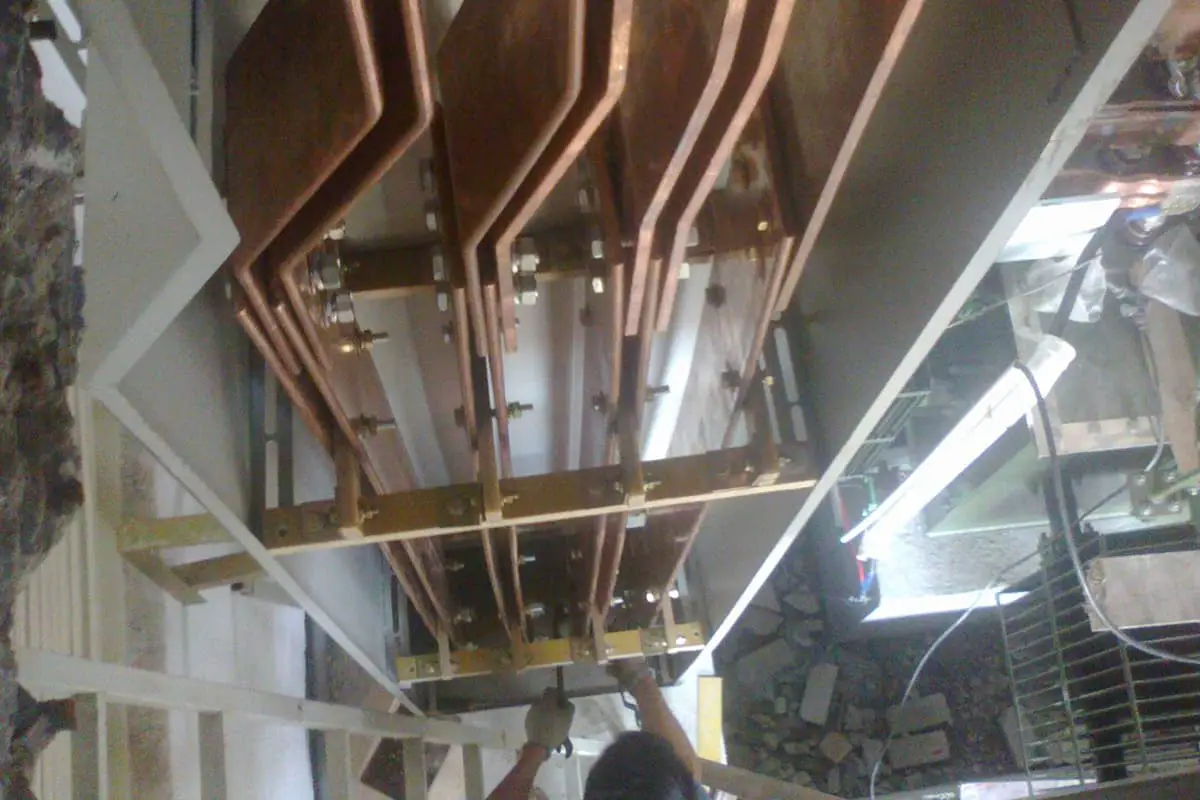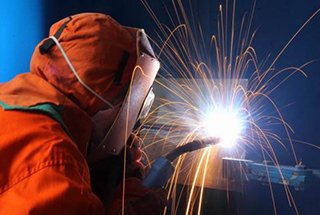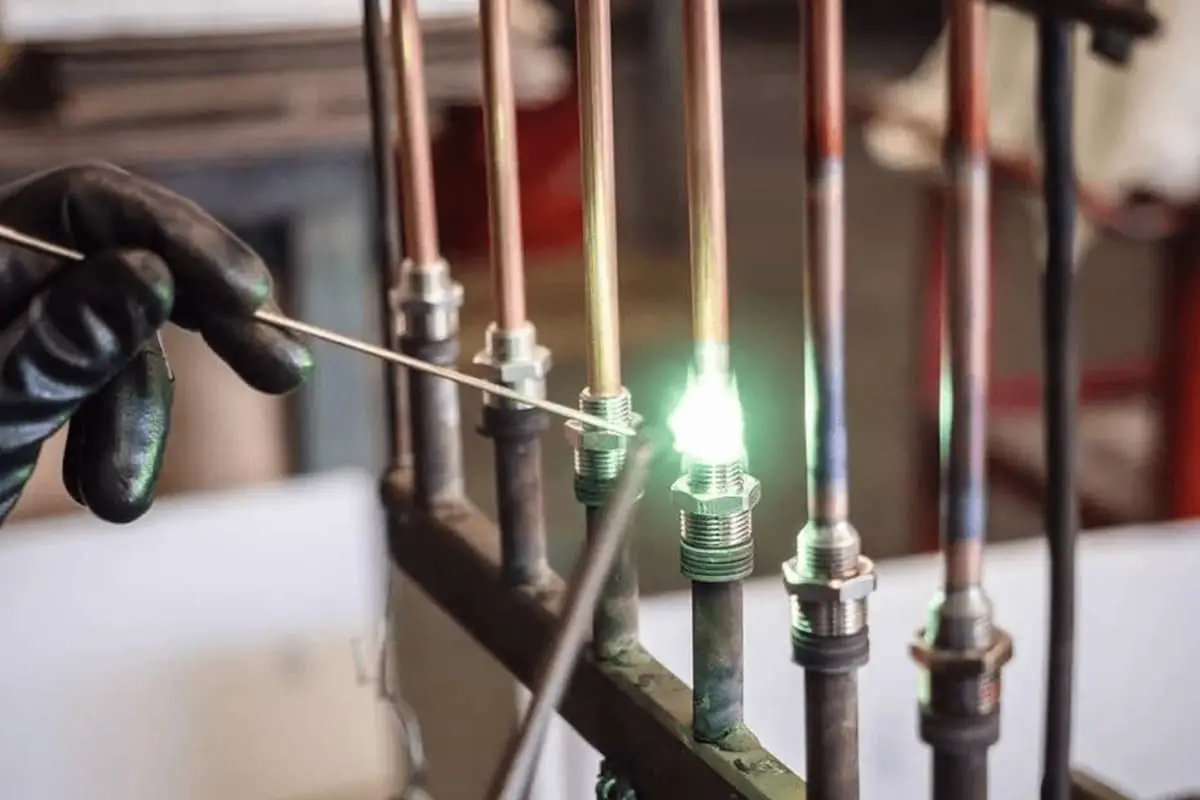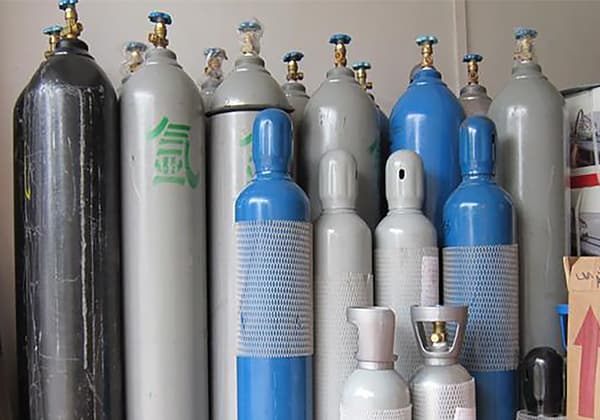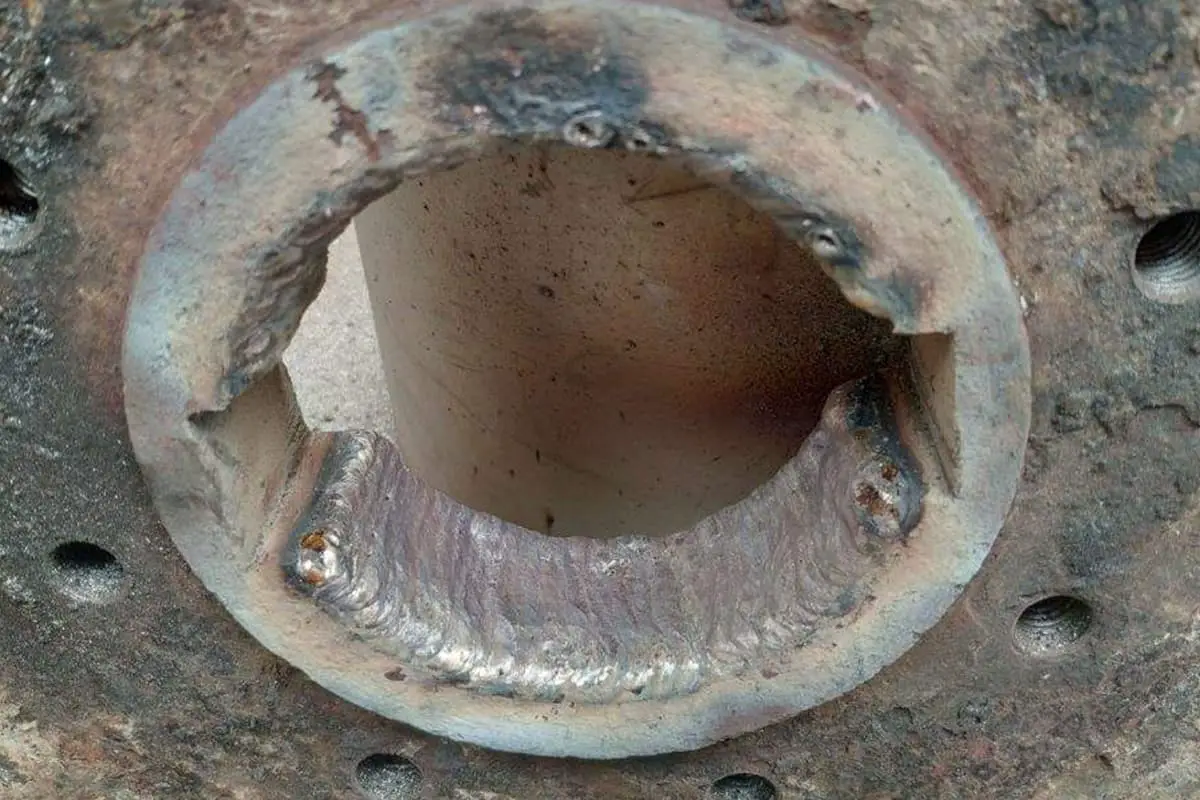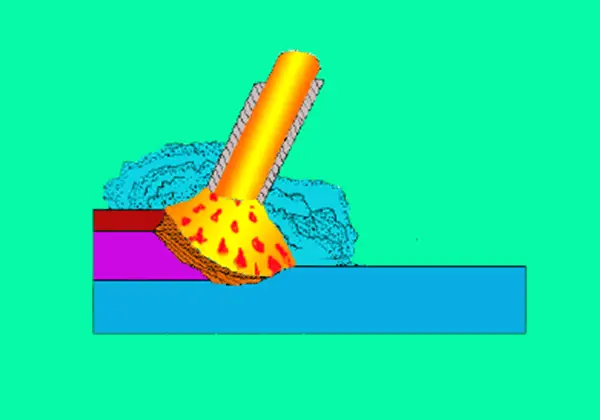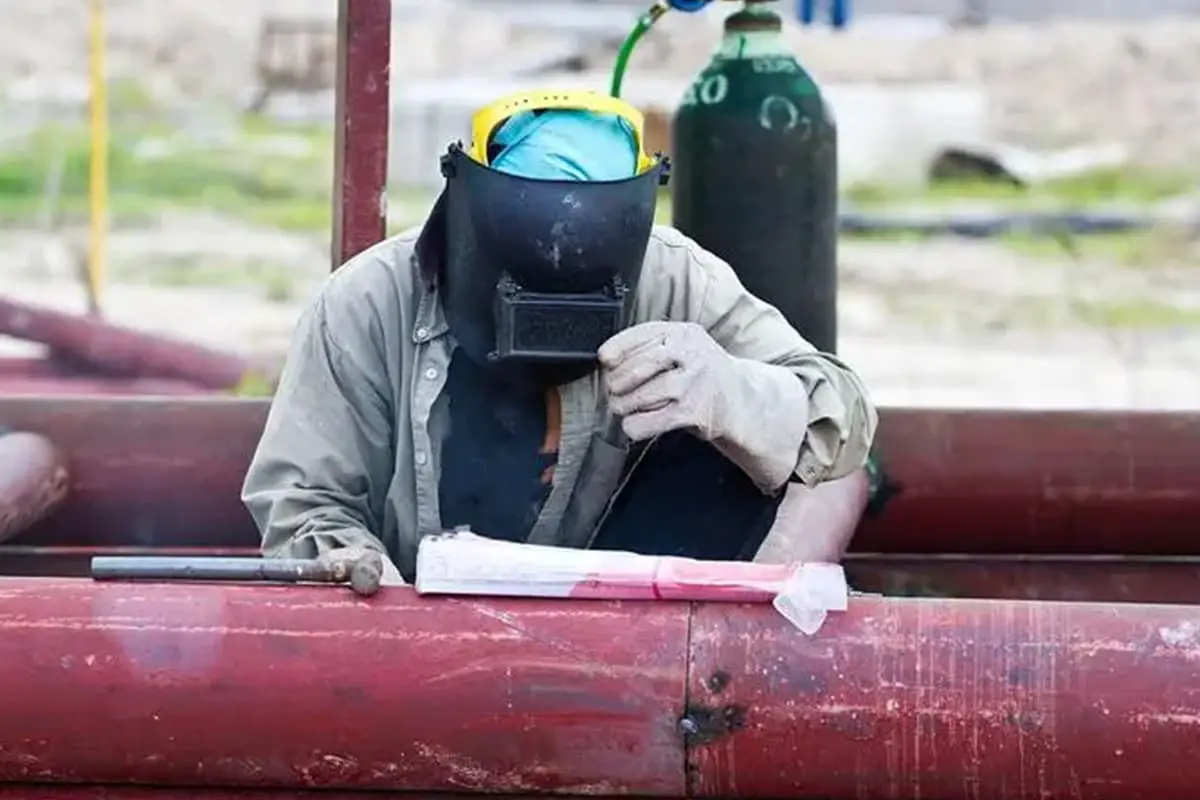
What makes brass welding such a challenge, and how can these obstacles be overcome? In this article, we explore the intricate world of brass welding, detailing the methods, techniques, and parameters essential for creating successful joints. You’ll learn about the common issues like zinc evaporation and how to counteract them using specific welding wires and processes. By the end, you’ll understand the practical steps needed to achieve strong, durable brass welds.
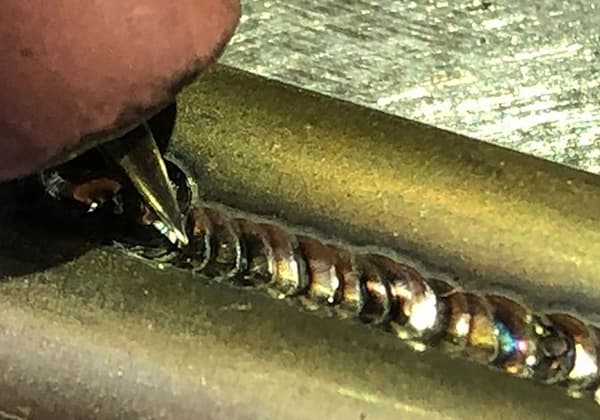
Brass, an alloy of copper and zinc, presents unique challenges in welding due to zinc’s low boiling point (907°C). This characteristic is the primary concern in brass welding, as it significantly impacts the process and final weld quality.
During arc welding with brass filler rods, the high-temperature environment can cause zinc evaporation rates up to 40%. This substantial loss of zinc leads to detrimental effects on the welded joint, including:
The evaporated zinc rapidly oxidizes in the air, forming zinc oxide (ZnO) which manifests as white smoke. This phenomenon not only complicates the welding operation but also poses serious health risks to welders, necessitating robust ventilation systems and personal protective equipment (PPE).
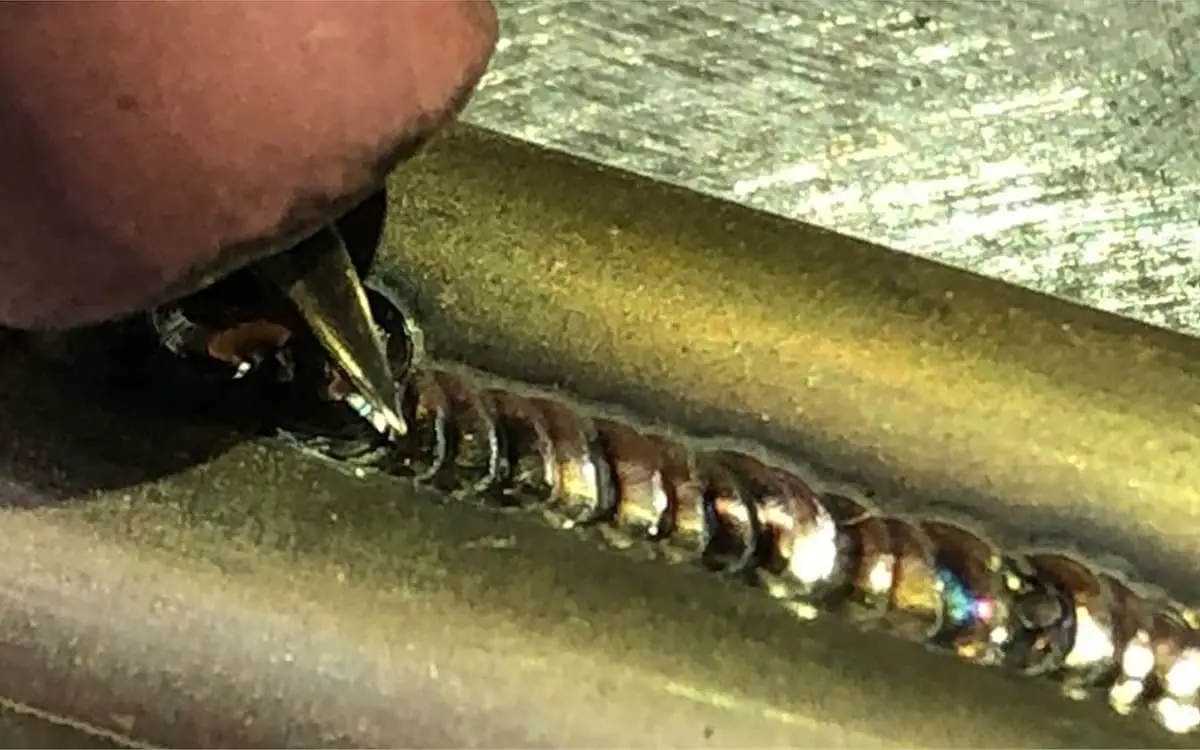
The poor weldability of brass can result in several defects:
To mitigate these issues, several strategies can be employed:
By implementing these techniques and maintaining strict control over welding parameters, it is possible to achieve high-quality brass welds while minimizing the inherent challenges associated with this alloy.
The commonly used welding methods for brass in production are stick arc welding and argon arc welding, and their key process points are as follows:
(1) Stick arc welding: Brass welding rod with bronze core wire is used, such as ECuSn-B (T227), ECuAl-C (T237). Pure copper core wire such as ECu (T107) can be used for brass castings that do not require high welding requirements.
The power supply should be DC positive connection, and the V-shaped groove angle should not be less than 60°-70°.
When the plate thickness exceeds 14mm, the surface of the weldment should be carefully cleaned before welding to remove all oil impurities that will generate hydrogen gas.
Short arc welding should be used during operation, and the welding rod should not be swung horizontally or longitudinally, only moving along the straight line of the weld. The welding speed should be fast, not less than 0.2-0.3m/min.
When multi-layer welding, the oxide film and slag between the layers should be removed. The copper liquid of brass has high fluidity, so the molten pool should be in a horizontal position. If the molten pool must be tilted, the inclination angle should not be greater than 15°.
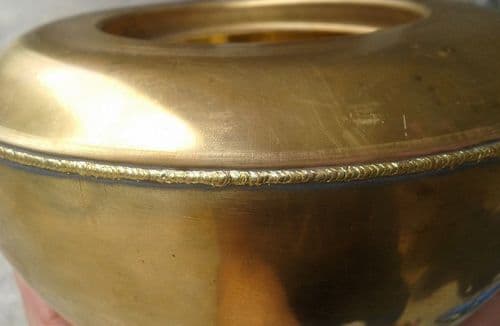
(2) Argon arc welding: Tin-brass welding wire HSCuZ-1 (HS221), iron-brass welding wire HSCuZn-2 (HS222), and silicon-brass welding wire HSCuZn-4 (HS224) are used in manual tungsten argon arc welding.
These welding wires contain high zinc content and produce large smoke during welding. Bronze welding wire such as HSCuSi (HS211) and HSCuSn (HS212) can also be used.
The welding parameters for manual tungsten argon arc welding of brass are shown in the table.
| Material Science | Plate thickness/mm | Groove form | Tungsten electrode diameter/mm | Type and polarity of power supply | Welding current/ | Argon gas flow rate A/(L/min) | Preheating temperature/℃ |
| Ordinary brass | 1.2 | Termination | 3.2 | DC direct connection | 185 | 7 | Not preheating |
| Tin brass | 2 | V-shaped | 3.2 | DC direct connection | 180 | 7 | Not preheating |
Due to the evaporation of zinc, which destroys the protective effect of argon gas, a larger nozzle aperture and argon gas flow rate should be selected when welding brass.
Generally, preheating is not required before welding, except for joints with a thickness greater than 10mm and joints with a significant difference in thickness between the welding edges, in which case only the thicker part of the weldment edge needs to be preheated.
The power supply can use DC positive connection or AC. When using an AC power supply for welding, the amount of zinc evaporation is relatively small.
Larger welding current and faster welding speed should be used for welding parameters.
The welding parameters for welding 16-20mm thick brass plates are: welding current of 260-300A, tungsten electrode diameter of 5mm, welding wire diameter of 3.5-4.0mm, nozzle aperture of 14-16mm, and argon gas flow rate of 20-25L/min.
To reduce the evaporation of zinc, the filling wire can be “short-circuited” with the workpiece during operation, and the arc can be initiated and maintained on the filling wire as much as possible, avoiding direct arc contact with the base metal. The base metal is mainly heated and melted by the heat transfer of the molten pool metal.
During welding, single-layer welding should be carried out as much as possible. For joints with a thickness less than 5mm, it is best to weld them in one pass.
After welding, the weldment should be heated to 300-400℃ for annealing to eliminate welding stress and prevent the brass component from cracking during use.
Brass is a copper-zinc alloy. Because zinc has a lower boiling point, at only 907°C, it is prone to evaporation during the welding process, posing a significant challenge in welding brass.
Under the high temperatures of welding, up to 40% of zinc can evaporate during stick arc welding.
This substantial evaporation of zinc leads to a decrease in the mechanical and corrosion-resistant properties of the weld joint, also increasing its susceptibility to stress corrosion.
The evaporated zinc is immediately oxidized into zinc oxide in the air, forming a white smoke that complicates the operation and affects the welder’s health.
Therefore, it is essential to reinforce ventilation and other protective measures in places where brass is welded. Brass’s poor weldability can lead to issues such as porosity, cracking, and evaporation and oxidation of zinc during welding.
To address these problems, silicon-containing welding wire is often used because silicon forms a dense layer of silica on the surface of the molten pool, inhibiting the evaporation and oxidation of zinc, and preventing the intrusion of hydrogen.
After welding, an annealing treatment at 470-560°C can be used to relieve stress and prevent “self-cracking”.
In production, common methods for welding brass include stick arc welding and argon arc welding. The essential points of these processes are as follows:
(1) Stick Arc Welding
The electrode used is a bronze core electrode, such as ECuSn-B (T227), ECuAl-C (T237). For brass castings that do not require high-quality welding, a pure copper core electrode, such as ECu (T107), can be used.
The power supply uses direct current with the electrode connected to the positive terminal, and the angle of the V-shaped groove should not be less than 60°-70°.
For plates thicker than 14mm, the surface of the welding parts should be carefully cleaned before welding to remove all oil impurities that can produce hydrogen gas.
During operation, short arc welding should be used, and the electrode should not be moved from side to side or back and forth but only in a straight line along the weld.
The welding speed should be fast, not less than 0.2-0.3m/min. When multi-layer welding, the oxide film and slag between layers should be thoroughly cleaned.
Brass has high fluidity, so the weld pool should ideally be in a horizontal position. If the pool must be tilted, the angle should not exceed 15°.
(2) Argon Arc Welding
During manual tungsten electrode argon arc welding, the welding wire used are tin-brass HSCuZ-1 (HS221), iron-brass HSCuZn-2 (HS222), silicon-brass HSCuZn-4 (HS224).
These wires contain a high amount of zinc, resulting in a large amount of smoke during welding. Bronze welding wire HSCuSi (HS211), HSCuSn (HS212) can also be used.
The welding parameters for manual tungsten electrode argon arc welding of brass are listed in the table.
| Material | Ordinary brass | Tin brass |
| Thickness/mm | 1.2 | 2 |
| Groove Type | Butt joint | V-groove |
| Tungsten Electrode Diameter/mm | 3.2 | 3.2 |
| Power Supply Type and Polarity | DCEN | DCEN |
| Welding Current/A | 185 | 180 |
| Argon Gas Flow Rate/(L/min) | 7 | 7 |
| Preheating Temperature/℃ | No preheating | No preheating |
Because the evaporation of zinc disrupts the protective effect of argon gas, a larger nozzle diameter and argon gas flow should be used when welding brass.
Preheating is generally not required, except when welding joints with thicknesses greater than 10mm and joints with significantly different edge thicknesses. In the latter case, only the thicker edge of the workpiece needs to be preheated.
Direct current with the electrode connected to the positive terminal or alternating current can be used as the power supply. When welding with alternating current, the amount of zinc evaporation is smaller.
Welding parameters should employ a larger welding current and faster welding speed.
The welding parameters for 16-20mm-thick brass plates are: welding current 260-300A, tungsten electrode diameter 5mm, wire diameter 3.5-4.0mm, nozzle diameter 14-16mm, argon gas flow 20-25L/min.
To reduce zinc evaporation, the filler wire can be “short-circuited” with the workpiece during operation, initiating and maintaining the arc on the filler wire to avoid the arc directly affecting the base material, which is heated and melted mainly by the heat transferred from the metal in the weld pool. When welding, single-layer welding should be performed as much as possible, and joints with a thickness less than 5mm should ideally be welded in one go.
After welding, the workpiece should be heated to 300-400℃ for annealing to eliminate welding stress and prevent the brass component from cracking during use.

